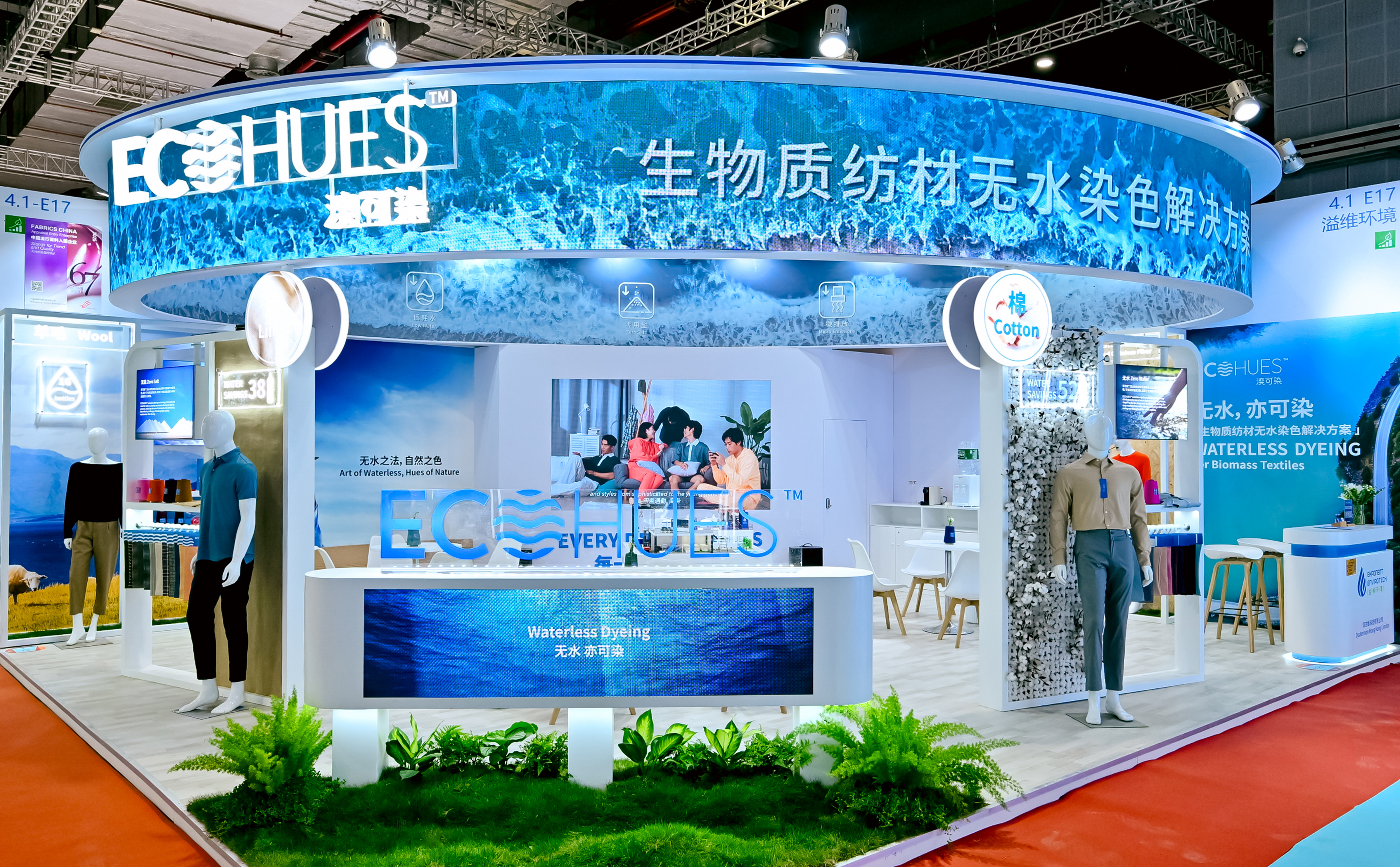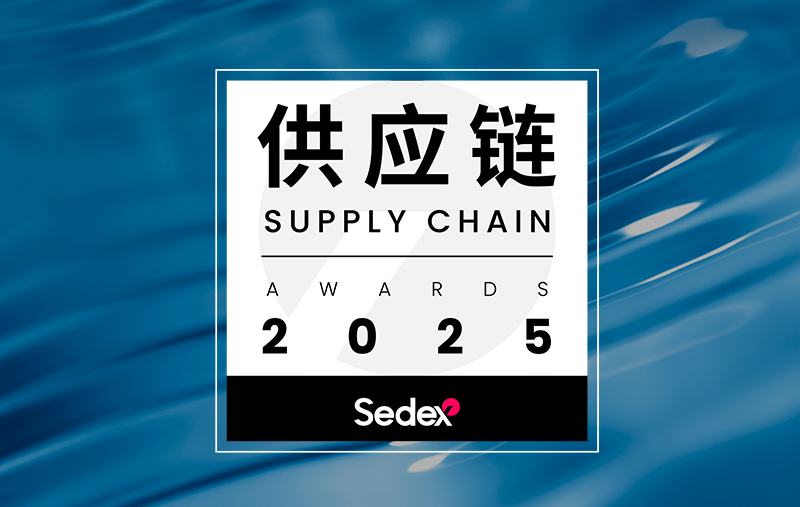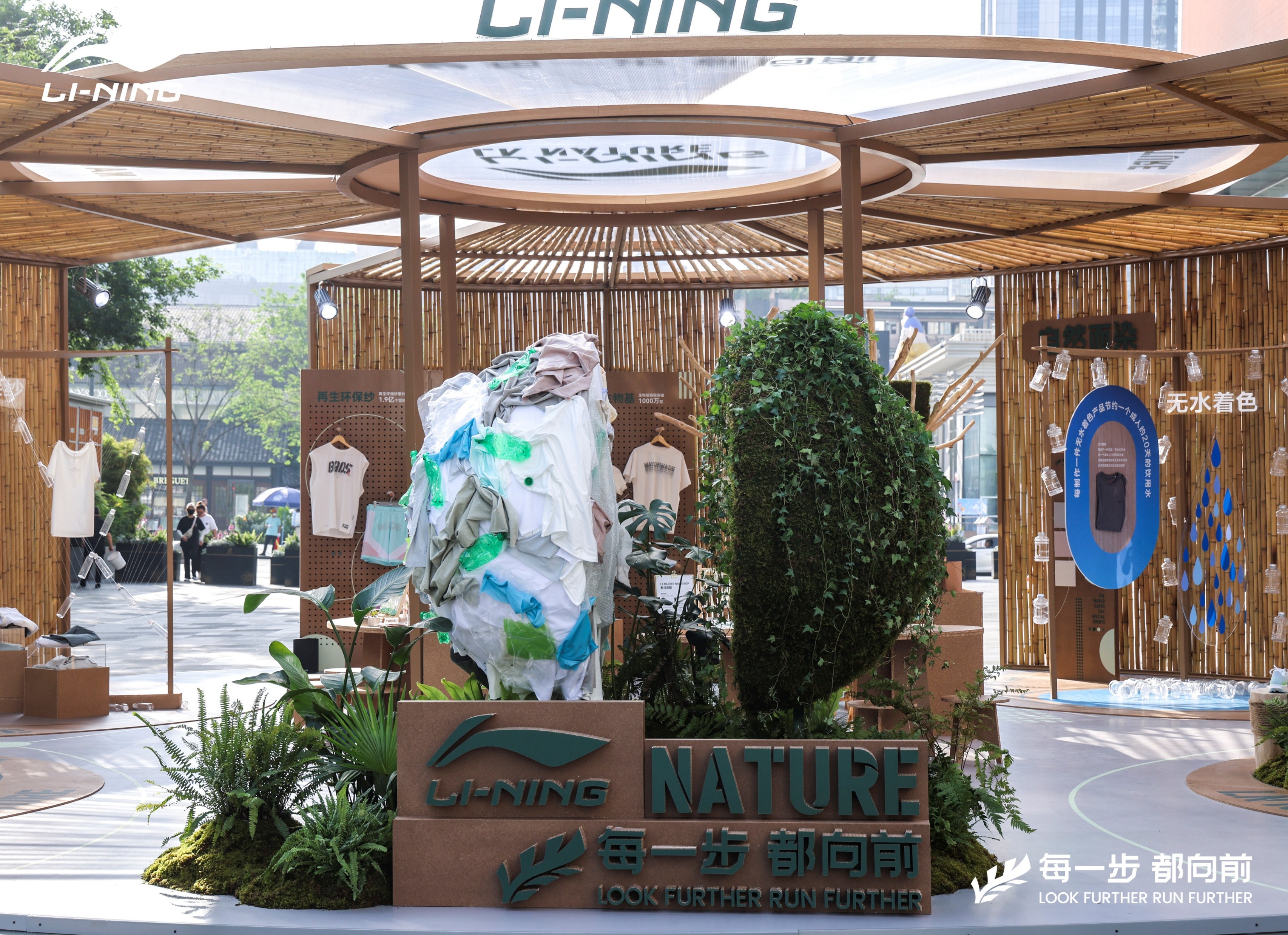Search Center
News (8)
-
Industry News 2025-12-03
ECOHUES™ Waterless Dyeing Technology Has Been Recognized in the Global Development Report 2025 by CIKD
More news
-
2025-09-19
ECOHUES™ Waterless Dyeing Performs a Triple Play at 2025 intertextile
More news
-
Industry News 2025-08-28
Tessellation Group, has received the Technical Innovation Award at the 2025 Sedex Supply Chain Awards
More news
-
Industry News 2025-05-28
Li Ning Collaborates with ECOHUES™, Protecting the Blue Planet with the Concept of " Nature Dyeing "
More news
FAQS (8)
-
Q01What's the dyeing mechanism of ECOHUES™ Waterless Dyeing Technology?

 Due to the absence of water in the ECOHUES™ dyeing process, the technology effectively avoids the hydrolysis of dyes, achieving efficient and high-quality dyeing. Moreover, the altered dyeing mechanism eliminates the need for dyeing promoters, achieving salt-free reactive dyeing. Currently, the fixation rate with ECOHUES™ technology exceeds 97% (compared to an average fixation rate of around 60% for conventional water-based dyeing), significantly improving the utilization rate of dyes. ECOHUES™ technology also eliminates the soaping process after dyeing, greatly saving water usage, simplifying and shortening the dyeing process, improving dyeing accuracy and the first-pass yield of dyeing.
Due to the absence of water in the ECOHUES™ dyeing process, the technology effectively avoids the hydrolysis of dyes, achieving efficient and high-quality dyeing. Moreover, the altered dyeing mechanism eliminates the need for dyeing promoters, achieving salt-free reactive dyeing. Currently, the fixation rate with ECOHUES™ technology exceeds 97% (compared to an average fixation rate of around 60% for conventional water-based dyeing), significantly improving the utilization rate of dyes. ECOHUES™ technology also eliminates the soaping process after dyeing, greatly saving water usage, simplifying and shortening the dyeing process, improving dyeing accuracy and the first-pass yield of dyeing. -
Q02Does the ECOHUES™ Waterless Dyeing Technology completely avoid the use of water during the dyeing process?

 The complete water-based reactive dyeing process includes pre-treatment (removing impurities such as wax and pectin), dyeing (coloring), post-treatment (rinsing), and finishing (fixation and softening). Substantial amount of water is used in coloring and rinsing/ washing processes of dyeing.
The complete water-based reactive dyeing process includes pre-treatment (removing impurities such as wax and pectin), dyeing (coloring), post-treatment (rinsing), and finishing (fixation and softening). Substantial amount of water is used in coloring and rinsing/ washing processes of dyeing.
ECOHUES™ technology does not use any water during dyeing (coloring) and thus eliminates the need for post-treatment (rinsing). For the medium to dark colors, pre-treatment (removing impurities) is generally not required as well with ECOHUES™, significantly reducing the water consumption. Only a small amount of water is required, for adding alkali and finishing processes (fixation and softening), which can be recycled. -
Q03Are there any limitations to the material and dyeing forms?

 ECOHUES™ Waterless Dyeing technology can be applied to materials that are traditionally dyed using the reactive dye system. This includes cellulose fibers such as cotton, linen, viscose, and more.
ECOHUES™ Waterless Dyeing technology can be applied to materials that are traditionally dyed using the reactive dye system. This includes cellulose fibers such as cotton, linen, viscose, and more.
The technology is suitable for various dyeing forms, including fiber dyeing, yarn dyeing, fabric dyeing, and garment dyeing. At present, our first industrial scale equipment primarily focuses on coned dyeing for cellulose yarn. -
Q04What's the advantage of ECOHUES™ technology on chemical consumption, water consumption and energy consumption when compared to traditional water-based dyeing?

 ECOHUES™ waterless dyeing technology uses zero water and zero salt during the dyeing process, resulting in around 73% reduction in chemical consumption and a 40% decrease in dye usage compared to traditional water-based dyeing. This technology saves 95% of water in the entire process and reduces dyeing time to 6-8 hours, resulting in a production efficiency increase of about 50%.
ECOHUES™ waterless dyeing technology uses zero water and zero salt during the dyeing process, resulting in around 73% reduction in chemical consumption and a 40% decrease in dye usage compared to traditional water-based dyeing. This technology saves 95% of water in the entire process and reduces dyeing time to 6-8 hours, resulting in a production efficiency increase of about 50%.
Traditional water-based dyeing requires multiple heating and washing cycles, leading to higher energy consumption. In ECOHUES™ waterless dyeing, energy is needed to recycle and reuse solvents. Nonetheless, the comprehensive energy consumption of ECOHUES™ technology is around 9% lower than traditional water-based dyeing as verified by globally recognized third party testing organization(Conventional water-based dyeing produces a large amount of wastewater, and the energy consumption of its treatment process has not been included in the above calculation, while the energy consumption of solvent recovery in ECOHUES™ is already included.)











